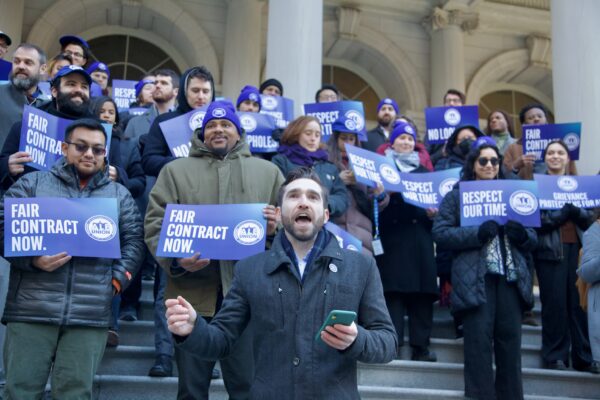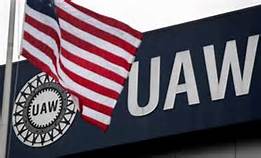October 3, 2016
By Joe Maniscalco
Brooklyn, NY – For the last six weeks, Rite Aid workers have taken to the streets of New York City in an effort to raise public awareness about the drug store giant’s assault on their health insurance plan — but the local fight is part of a much broader nationwide trend in which corporate entities like Rite Aid are racing to shift more of the cost of healthcare onto the backs of those who can least afford it.
“It’s not a good position for us to be in,” Berta Silva, vice-president of SEIU1199’s Pharmacy team recently told LaborPress. “We believe our health plan is the best in the city. It’s one of the standard bearers. What [Rite Aide is offering] now doesn’t even include retiree benefits.”
A recent Kaiser Family Foundation analysis shows that workers with employer-based health insurance plans are increasingly paying more for coverage in the form of higher premiums and larger deductibles. According to the report, those deductibles are 50 percent higher than they were five years ago.
Rite Aid workers represented by SEIU1199 like their existing Taft-Hartley health insurance plan, but management is pushing a far skimpier new health insurance package that is contingent upon hours worked rather than earnings, and could leave many vulnerable as a result.
“Rite Aid holds all the cards right now and they can control what benefits these people get just by cutting their hours if they want to, which they have,” 20-year Rite Aid veteran Aikel Salazar told LaborPress. “They cut payroll left and right all the time.”
Suspension of existing healthcare benefits for Rite Aid workers could come as early as next week. Management and SEIU1199 reportedly last met at the bargaining table on September 6. The union has since filed unfair labor practice charges against Rite Aid at the National Labor Relations Board for both unilaterally declaring an impasse and implementing the company-sponsored health plan.
“If you’re at 29-hours a week, you will not be eligible for their health plan,” Silva said. “And we do have pharmacists who would work one shift, and their shifts are usually 13-hour days, maybe two a week. Some of those guys are not going to be receiving any health insurance going forward.”
In addition to shunting more healthcare costs onto workers, Rite Aid has also moved to remove pharmacists from the traditional bargaining unit, a tactic that directly weakens union strength.
The company, meanwhile, is also in the process of merging with fellow drug store giant Walgreens and recently debuted a new 900,000 square foot distribution center in Spartanburg, South Carolina.
“They want to change the face of the bargaining unit because they tell us they can’t afford us, which is a big lie,” 27-year Rite Aid pharmacist Edward Weiner told LaborPress. “They just opened up a $900-million dollar distribution center in South Carolina. If you’re not making money, you can’t afford these things. They can afford us — they just don’t want to part with the money.”
Already, the union says that Rite Aid has begun giving pharmacists managerial duties and pulling them out of the traditional bargaining unit.
“Some of our union pharmacists are being plucked and being told they have been selected to be a supervising pharmacist,” Silva said. “They are being told that they will have managerial duties and are not functioning as a regular staff pharmacist. [Rite Aid] probably is planning to increase the number of supervisory [jobs] to decrease our membership of unionized pharmacists. Anyone hired beginning this month will not be in the union.”
Salazar said that she just wants Rite Aid to treat its workers right.
“I have a lot of people that work me — they are students, they are people who are older and can’t work that much. They count on these benefits.”
Rite Aid has reportedly tried to assuage workers’ fears about costly deductibles and co-pays, but the union isn’t buying it, pointing out that non-unionized workers at a few outlets located in Upstate New York are already paying “significant amounts of money per month for their health plan.”
“Ultimately, that’s what [Rite Aid] wants,” Silva said.
Rite Aid has not responded to requests for comment.



